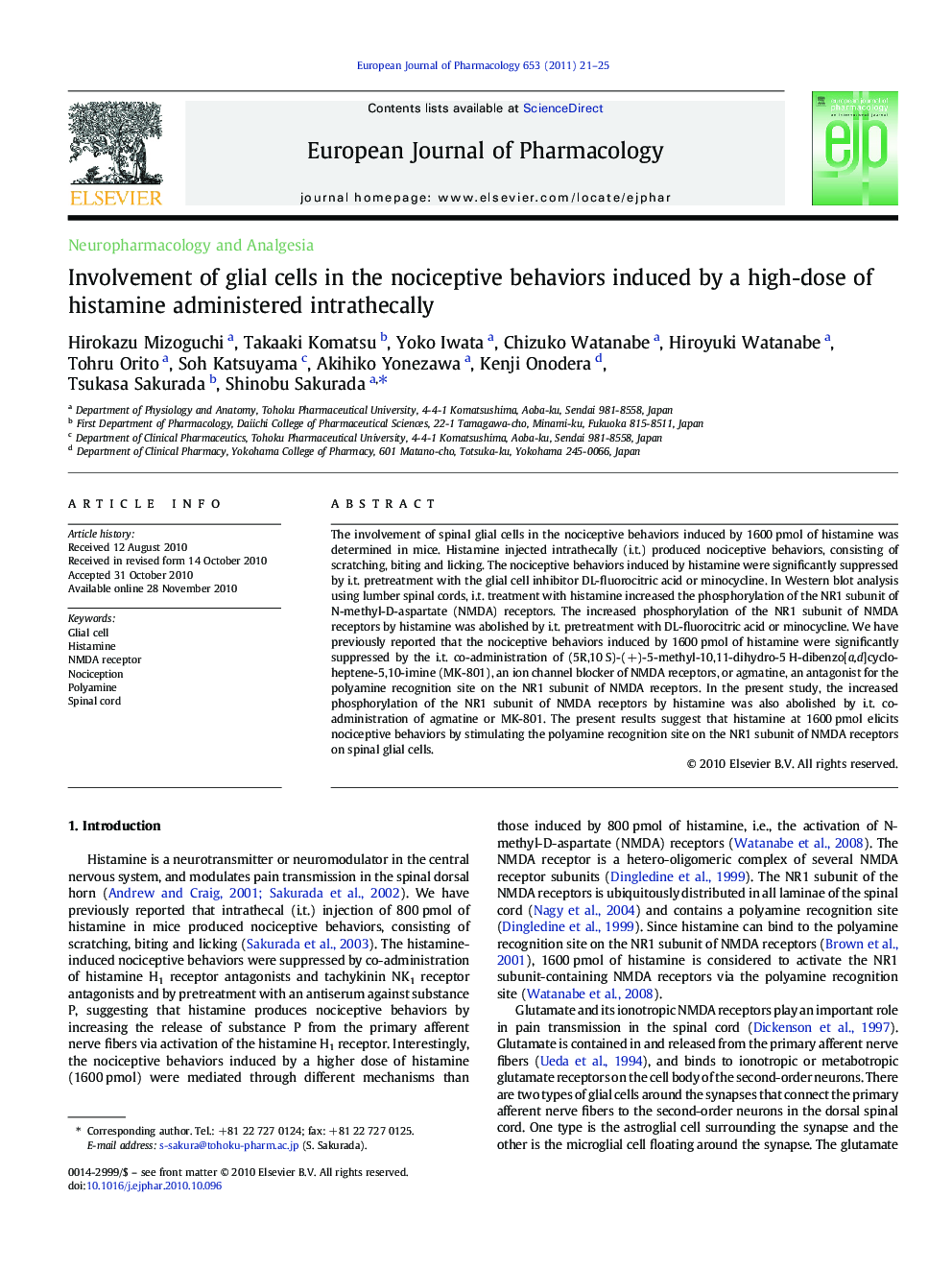| Article ID | Journal | Published Year | Pages | File Type |
|---|---|---|---|---|
| 5830415 | European Journal of Pharmacology | 2011 | 5 Pages |
Abstract
The involvement of spinal glial cells in the nociceptive behaviors induced by 1600Â pmol of histamine was determined in mice. Histamine injected intrathecally (i.t.) produced nociceptive behaviors, consisting of scratching, biting and licking. The nociceptive behaviors induced by histamine were significantly suppressed by i.t. pretreatment with the glial cell inhibitor DL-fluorocitric acid or minocycline. In Western blot analysis using lumber spinal cords, i.t. treatment with histamine increased the phosphorylation of the NR1 subunit of N-methyl-D-aspartate (NMDA) receptors. The increased phosphorylation of the NR1 subunit of NMDA receptors by histamine was abolished by i.t. pretreatment with DL-fluorocitric acid or minocycline. We have previously reported that the nociceptive behaviors induced by 1600Â pmol of histamine were significantly suppressed by the i.t. co-administration of (5R,10Â S)-(+)-5-methyl-10,11-dihydro-5Â H-dibenzo[a,d]cycloheptene-5,10-imine (MK-801), an ion channel blocker of NMDA receptors, or agmatine, an antagonist for the polyamine recognition site on the NR1 subunit of NMDA receptors. In the present study, the increased phosphorylation of the NR1 subunit of NMDA receptors by histamine was also abolished by i.t. co-administration of agmatine or MK-801. The present results suggest that histamine at 1600Â pmol elicits nociceptive behaviors by stimulating the polyamine recognition site on the NR1 subunit of NMDA receptors on spinal glial cells.
Related Topics
Life Sciences
Neuroscience
Cellular and Molecular Neuroscience
Authors
Hirokazu Mizoguchi, Takaaki Komatsu, Yoko Iwata, Chizuko Watanabe, Hiroyuki Watanabe, Tohru Orito, Soh Katsuyama, Akihiko Yonezawa, Kenji Onodera, Tsukasa Sakurada, Shinobu Sakurada,
